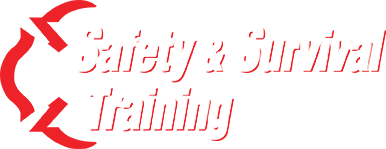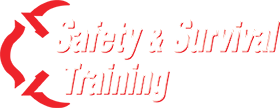Modern Fire Dynamics
3 Hours – Lecture
The fire service must stay current with the modern trends of building constructions and materials as they are changing the dynamics of our fire grounds. The way fire is burning and behaving has changed from years past due to the modernization of today’s fire ground. This program will address some of the hot topics of the modern fire service and relate them to our traditional modes of operation. Emphasis will be placed on wind-driven fire situations.
Fire Ground Tactics
4, 8, 12 or 16 Hours – Lecture & Practical
The Fire Ground Tactics program shall consist of engine and ladder company operational skills in regards to effective & coordinated fire ground operations. Practical skills stations will include hose stretches & deployments, interior attack operations, primary search procedures, portable laddering, vent-enter-search, forcible entry and ventilation techniques. Scenario-based simulation will be tied into each skill station. Students will apply their normal operating procedures to newly learned or refined skills to operate safer and efficiently on the fire ground as a cohesive team.
Engine Company Techniques
4, 8, 12, or 16 Hours – Lecture & Practical
The Engine Company Techniques program focuses on all he fundamental skills to operate as an effective engine company. Focus will be placed on riding positions, order of arrival engine assignments, water supply, stretching and operating primary and secondary hand lines, the use the 2-1/2 inch line, extended line deployments, incorporation of hose bundles, standpipe operations, master streams, etc. Fire ground attack strategies will include offensive, defensive & transitional modes.
Ladder Company Techniques
4, 8, 12, or 16 Hours – Lecture & Practical
This program will break down the ladder company techniques based on private dwelling and commercial building operations. Private dwelling techniques will focus on primary search, portable ladder/aerial use, vent enter search, conventional forcible entry, vertical peaked roof ventilation. Commercial building techniques will focus on search rope operations, vertical flat roof ventilation, roll-down entry, thru-the-lock entry, portable/aerial ladder apparatus use. S&ST will provide the ability for the training to be delivered at the department’s location with the use of S&ST mobile training simulators.
Squad Company Operations
4, 8, 12, or 16 Hours – Lecture & Practical
Search Rope Procedures
4 or 8 Hours – Lecture & Practical
This program will break down the search rope concept for use on the fire ground. Students will learn the what, why, when, where, who & how of search rope use. Search rope emergencies along with initial versus coordinated search operations will be covered. This program can be delivered in lecture or practical format to learn the value that the search rope has in the fire service.
Forcible Entry: Basic
4, 8, or 12 Hours – Lecture & Practical
To provide an overview of the concepts, techniques and tactics involved in successful forcible entry, both for fire ground access and for the safety of all operating members. Students will conduct conventional forcible entry on a variety of doors. Students will learn how to describe and demonstrate the through-the-lock forcible entry method on various lock examples. The use of power saws in conventional forcible entry operations will also be covered. SST has the ability to provide the use of their mobile forcible entry props.
Forcible Entry: Advanced
4, 8, or 12 Hours – Lecture & Practical
The Advanced Forcible Entry program will step up the game of the firefighter to effectively overcome fortified access points to residential & commercial occupancies. Areas of instruction will include security bars, reduced vision, alternative methods, forcible egress and complexed scenarios. S&ST will provide the use of its mobile simulators to provide this program at your location.
Basic Peaked Roof Operations
3 Hours – Practical
This program will provide the students with instruction on residential peaked roof operations with the use of the SST mobile training simulator. Students will work from portable ground ladders and aerial devices.
Flat Roof Operations
4 Hours – Practical
The Flat Roof Operations program will focus on the techniques utilized to conduct vertical ventilation of commercial flat roof occupancies. Students will learn how to cut through various types of flat roof materials to complete their mission. S&ST can provide the use of their mobile training simulator or conduct the training at an acquired structure.
Solar Panel Awareness
3 Hours – Lecture
This program shall provide responders with an awareness of photo-voltaic systems so that can successfully operate around and make decisions on the fire ground to ensure safe operations. Students will learn what the meaning of solar panel, why people are utilizing it, what it is used for, types of systems, and the impact on the fire service.
Building Construction for the Fire Service
3 or 6 Hours – Lecture
The Thermal Imaging Camera Use program will educate the students on the operation and use of their newly purchased thermal imaging cameras. Students will be educated through classroom as well as practical skills focusing the use of the thermal imaging camera for location of civilian fire victims, searching for fire/extension, firefighter rescue and other special hazard uses.
Thermal Imaging Camera Use
4 or 8 Hours – Lecture & Practical
The Thermal Imaging Camera Use program will educate the students on the operation and use of their newly purchased thermal imaging cameras. Students will be educated through classroom as well as practical skills focusing the use of the thermal imaging camera for location of civilian fire victims, searching for fire/extension, firefighter rescue and other special hazard uses.
Operating on the Floor Above
3 Hours – Lecture
The dangers of operating on a floor above the fire are highlighted. Precautionary measures to ensure a safe working environment for firefighters engaged in fire suppression activities are the focus. Flashover, backdraft in voids, structural failure, and wind-driven fires are discussed. Students review the reasons it is necessary to thoroughly and continuously assess the fire structure, to quickly get a stream on the fire, and to provide egress opportunities from upper floors by laddering. Additional safety and survival techniques are explained. Case studies involving firefighter injuries and fatalities help to emphasize the messages.
Fire Ground Radio Transmissions
3 Hours – Lecture & Practical
Critical messages are transmitted on incidents via the fire ground radio that provide value to the outcome of situations. How effective are your departments radio transmissions? Is crucial radio time being consumed by non-essential radio traffic? This program will focus the how, when, who and what should be transmitted on the fire ground radio. All positions from the firefighter to the incident commander will be addressed with practical simulations to reinforce the objectives.



